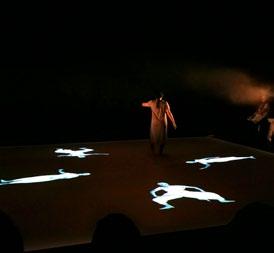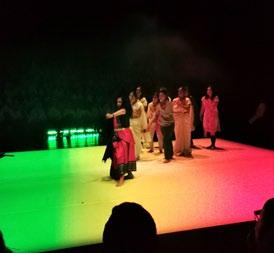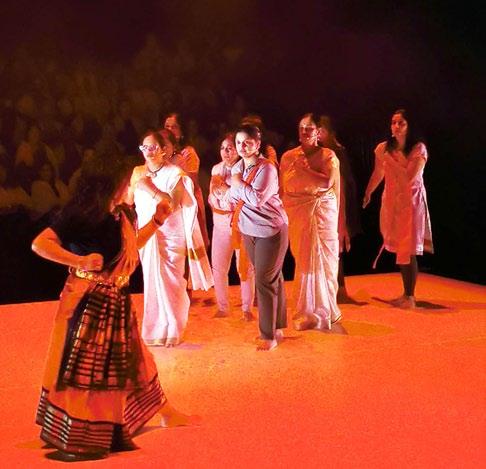
2 minute read
Durga female gendered violence
from 2022-09 Melbourne
by Indian Link
important visuals from the storyline would be projected.
Soon we were transformed out of our home comforts onto a lit red stage where Srinivasan entered. She played a young woman who sensed danger on her journey home from an evening class. Whilst one would expect that the story of the young girl would take us through the entire performance, Srinivasan instead made efforts to share a collecti e and global stor . oiceo ers o e er da women guided us through the performance as they recollected their experiences of gendered violence - their location when it happened, how far they were from home, and what happened to them. One couldn’t help but be struck by the frequency with which this occurs in everyday life.
Lighting was used as a key tool throughout the show. There were moments of darkness and silence, whilst green and red lights took us through the battle scene. And some of the most intimate moments were when our white cloaks became a human projection screen bathing us with images such as mouths – as we heard the women’s powerful and at times, desperate voices. rini asan is known or using different art forms into her productions, from visual arts to multimedia. True to style, this show delivered. Goddess Durga was introduced to the audience with beautiful projections on the stage as we heard the story of her creation by Shiva and other Gods who had struggled to fight the villain Mahishasura. The projections were powerful, but it was the collaboration with the Women’s Choir that was central to this show. The 12 singers from the Keerthana Women’s Choir sang carefully selected songs about Durga supporting her central character. But their role went further - they walked together, they engaged with the audience, they danced, and they supported each other. Perhaps it was the essence of Durga that they were conveying through their collective singing voices and actions.

Durga played a more prominent role in the second half of the performance. Srinivasan changed into a bold red, gold and black lehenga held into place with a waist tie. Her fierce eyes and flowing hair conveyed her strong resolve wonderfully as she took up her weapon. Similarly, the Keerthana Women’s Choir tied red sashes around their waists, readying themselves for battle. In a powerful scene we saw Goddess Durga and Women’s Choir clustered together in military formation, using dance to depict their fight. Alas Durga was beaten down, reminding us of the women who aren’t able to fight back. We heard callouts from victims in voiceovers, “Durga, where are you?” It was a sad moment, where we felt a sense of despair for those who could not fight back.
The loud sounds and movements of the fight scene were contrasted by a deeply moving scene where the lead choir singer thra ija roused urga rom her defeated state. We saw Durga lean on her as she slowly regained strength.
At times it was unclear how Durga’s role and the performance would be resolved but the final scene felt fitting. Durga and the women marched together slowly and solemnly, around all corners of the centre stage, and then out of the auditorium. It felt as though they were calling us to account, to play our part in creating a safer future for women.












